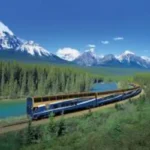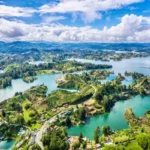Exploring the Lesser Known Sabah and Sarawak in Malaysia
Malaysia is often associated with the skyscrapers of Kuala Lumpur, the historical charm of Melaka, or the beaches of Langkawi. However, tucked away on the island of Borneo lie Sabah and Sarawak—two Malaysian states that remain relatively unexplored by mainstream tourism. These states offer travelers a completely different cultural, ecological, and historical experience compared to Peninsular Malaysia.
Where Are Sabah and Sarawak?
Sabah and Sarawak are located on the northern portion of Borneo, the third-largest island in the world. They share borders with the tiny nation of Brunei and the Indonesian region of Kalimantan. While both states are part of Malaysia, they have autonomous laws on immigration and unique indigenous cultures that set them apart from the rest of the country.
Traveling Within Sabah and Sarawak
Getting around in Sabah and Sarawak is more convenient than many travelers expect. Although some remote areas require 4WD or riverboats, major towns and tourist spots are connected by reliable road networks.
If you’re planning an overland journey between cities or from airports to rural destinations, using a reliable bus service is a cost-effective and comfortable choice. Platforms like redBus make it easy to find and book long-distance buses operated by trusted services such as Bas Asia. These buses connect cities like Kota Kinabalu, Sandakan, Miri, Sibu, and Kuching, ensuring you can explore the region without the hassle of driving.
Bas Asia, in particular, has built a strong reputation for punctuality and comfort, making it a preferred option for both locals and tourists. Booking a bus online also allows you to compare fares, view seat layouts, and schedule trips ahead of time—especially helpful when planning excursions to national parks or during local festivals when demand surges.
The Natural Beauty of Sabah
Sabah is best known for its incredible biodiversity and dramatic landscapes. The towering Mount Kinabalu, one of Southeast Asia’s highest peaks, dominates the skyline and draws trekkers from around the globe. Nature lovers will also be captivated by the Danum Valley Conservation Area—a pristine rainforest teeming with rare wildlife such as orangutans, pygmy elephants, and clouded leopards.
Off the coast, the islands surrounding Sabah, such as Sipadan and Mabul, offer some of the best diving and snorkeling in the world. The coral reefs here are vibrant and well-preserved, home to turtles, reef sharks, and an array of colorful marine life.
Sarawak: The Cultural Heart of Borneo
Sarawak, Malaysia’s largest state, offers a different kind of allure. It’s a land of longhouses, tribal heritage, and winding rivers. The state is home to more than 40 sub-ethnic groups, including the Iban, Bidayuh, and Orang Ulu tribes, each with their own languages, customs, and festivals.
A visit to the Sarawak Cultural Village near Kuching provides a fascinating glimpse into the state’s ethnic diversity. For those interested in history and anthropology, the state museum is a treasure trove of artifacts and indigenous tools.
Nature is also abundant in Sarawak. Bako National Park, just a short drive from Kuching, offers jungle trekking and the chance to spot proboscis monkeys. Meanwhile, the Mulu Caves, a UNESCO World Heritage Site, showcase some of the largest and most stunning cave systems in the world.
Culinary Adventures in East Malaysia
The culinary landscape in Sabah and Sarawak differs notably from Peninsular Malaysia. In Sabah, fresh seafood is widely available and reasonably priced. Dishes like Hinava (a raw fish salad marinated in lime juice) and Tuaran Mee (a noodle dish unique to Tuaran town) are must-tries.
Sarawak, on the other hand, offers delicacies such as Sarawak Laksa—a spicy, coconut milk-based noodle soup—and Kolo Mee, a dry-tossed noodle dish served with minced pork or chicken. Food markets in Kuching and Kota Kinabalu are great places to sample these dishes while mingling with locals.
Festivals and Local Culture
Sabah and Sarawak are rich in cultural celebrations. In Sabah, the Kaamatan Festival, or Harvest Festival, is celebrated in May to honor the rice spirit and thank nature for a good harvest. Traditional dance, music, and food are central to the festivities.
Sarawak’s counterpart is the Gawai Dayak Festival, usually celebrated in June. It’s a vibrant occasion that showcases the indigenous cultures of the Dayak people. Visitors are often welcomed into longhouses to enjoy feasts, traditional games, and storytelling.
These festivals provide a fantastic opportunity to witness authentic tribal traditions and community spirit that are otherwise hard to find in more urban settings.
Why Sabah and Sarawak Deserve Your Attention
If you’re looking for an off-the-beaten-path destination with genuine cultural experiences, stunning natural beauty, and warm hospitality, Sabah and Sarawak should top your list. The diversity in landscapes, languages, and traditions is unmatched and often surprises those accustomed to the more commercialized side of Malaysian tourism.
By planning your trip with care and using reliable transport platforms like redBus, your journey through East Malaysia can be smooth and unforgettable. So, pack your bags and discover the hidden gems of Borneo—before the rest of the world catches on.







